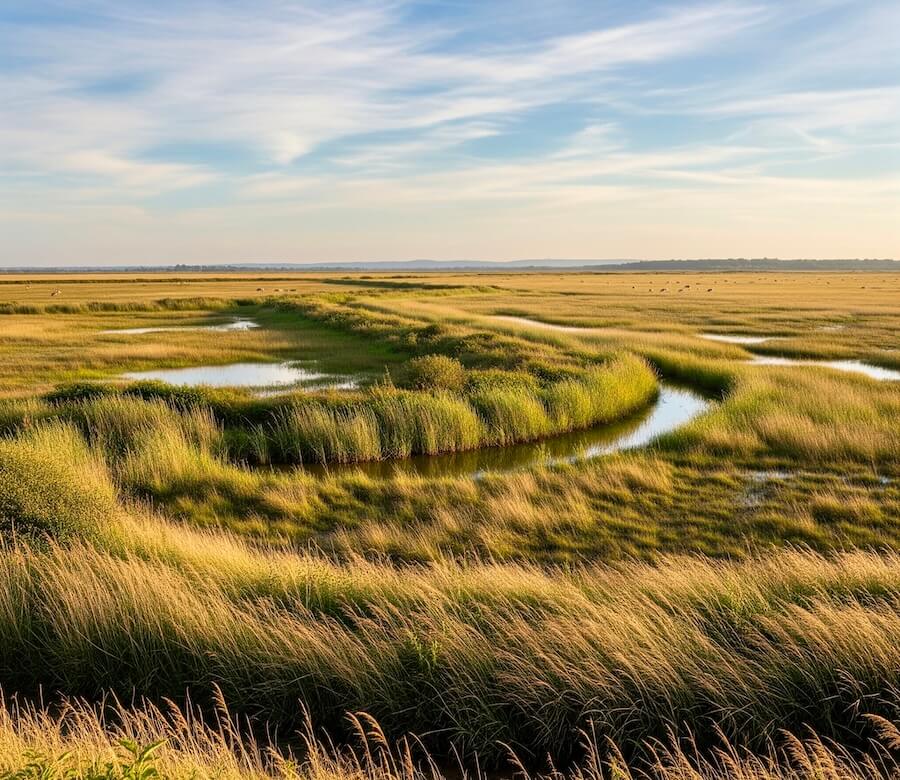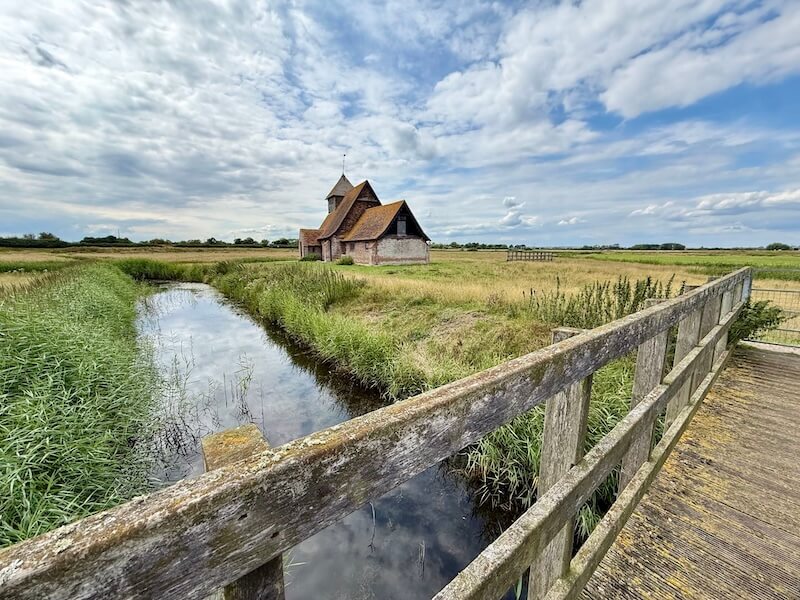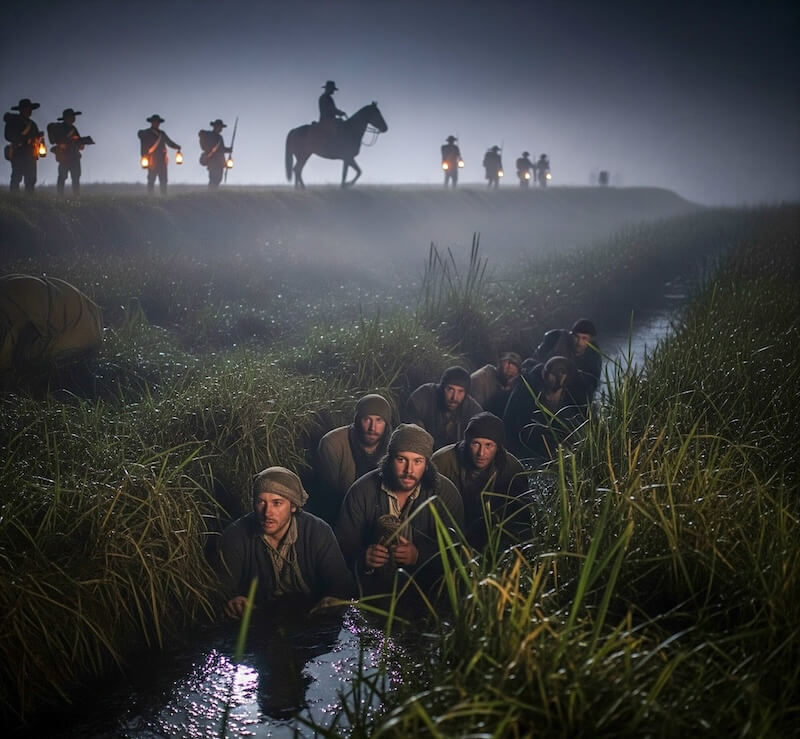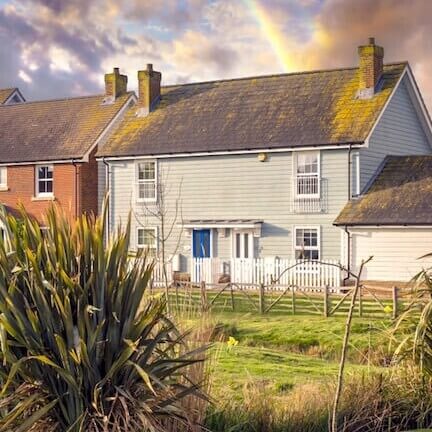
🌾 Not just beach views… but wild tales too. Step beyond our cosy Camber cottages and you’ll find yourself on the edge of Romney Marsh — a landscape steeped in mystery, smuggling, ghost stories and local legends.
TL;DR: Romney Marsh sits just inland from Camber Sands. Once a shallow bay, it silted up into a flat, reed‑lined wilderness that smugglers, storytellers and sheep farmers have called home. Today you can walk its dykes, explore churches with hidden stashes and follow smuggling trails from our cottages.
What makes Romney Marsh unique?
-
A fifth continent: Victorian writer Richard Barham joked that the world was divided into Europe, Asia, Africa, America — and Romney Marsh. That’s how distinctive this place feels.
-
A landscape shaped by the sea: The Marsh sits between Dungeness and Rye and covers about 100 square miles (260 km²). Thousands of years ago it was a bay. Sand and shingle gradually enclosed it, leaving a flat wilderness criss‑crossed by drainage ditches.
-
Isolation bred mystery: Malaria and swampy ground kept settlers away. That isolation preserved a place where history clings to hedgerows and every footpath has a story.
-
Hardy locals: The hardy Romney Marsh sheep you’ll see grazing here are one of the world’s most important breeds.
A smuggler’s paradise
The Marsh’s maze of creeks and ditches provided perfect cover for contraband. Tales from the 17th–19th centuries include:
-
Smugglers dodging blockade patrols through misty marshes with barrels of brandy. Members of the notorious Hawkhurst Gang were said to sit in Rye’s Mermaid Inn with loaded pistols on the table while cargo was shifted below.
-
Churches hiding secret stashes: The Flushing Inn at New Romney hoisted kegs into a hidden attic via a secret lift dating back to medieval times.
-
Local legends: Tales of a curious young man who dared to question the smugglers at The Red Lion in Rye. He vanished without trace.
You can retrace this history on the Smuggling Trail, which starts in Rye, crosses Romney Marsh and loops along the coast. Follow it and you’ll almost hear the splash of oars in the mist.
Ghost stories & the Ingoldsby Legends
Mists and marshes breed legends. In the early 1800s Reverend Richard Harris Barham, rector at Snargate’s St Dunstan’s Church, wrote humorous poems and ghost stories under the pen name Thomas Ingoldsby. His collection The Ingoldsby Legends draws on local folklore — phantom coaches, haunted pubs and spectral monks stalking the dykes. It’s here that Barham quipped: “The world … is divided into Europe, Asia, Africa, America — and Romney Marsh”.
Many stories are set in the villages of Snargate, Brookland and Ivychurch, where medieval churches seem too big for their tiny communities. St Thomas à Becket at Fairfield sits alone in a sea of grazing marsh — visit at twilight and you’ll understand why tales of ghosts persist.

Things to do on Romney Marsh
-
Walk the dykes: Grab your walking boots and explore miles of flat footpaths. Big skies, reed beds and the occasional marsh harrier make every stroll memorable.
-
Visit historic churches: Churches at Fairfield, Brookland, Snargate and Ivychurch hide sailors’ gravestones and — according to rumour — smuggling marks.
-
Explore Rye: Wander the cobbled streets of Rye. Pop into the Mermaid Inn for a drink in smugglers’ footsteps, then visit Lamb House, once home to novelist Henry James.
-
Discover Dungeness: This stark shingle headland is like another world. Climb the lighthouse, sample fresh fish at the snack shack and explore the unusual vegetation.
-
Ride the Romney, Hythe & Dymchurch Railway: A narrow‑gauge steam railway that runs across the Marsh to Dungeness — perfect for families and train buffs.
Stay with us & step into the story
📍 Staying with us? Our Camber cottages put you minutes from both golden dunes and Romney Marsh’s atmospheric lanes. After a day exploring smugglers’ haunts and ancient churches, return to a cosy cottage by the sea.
Ready to uncover the secrets of the Marsh? Book your stay today and see why this corner of England has inspired wild tales for centuries.




